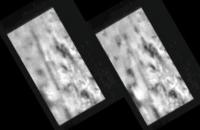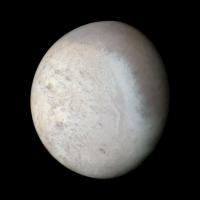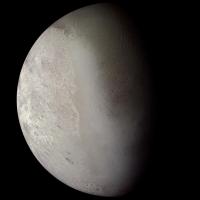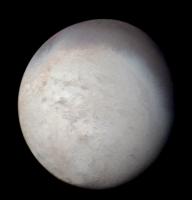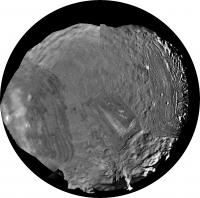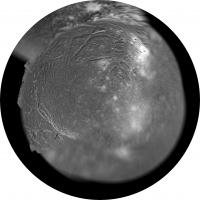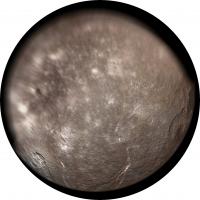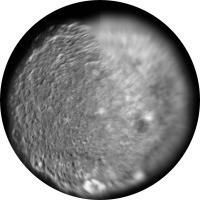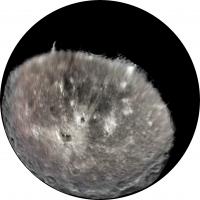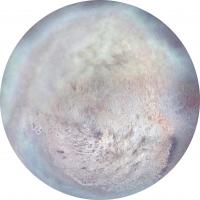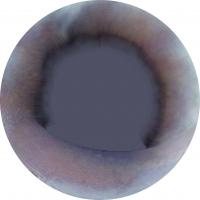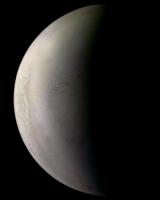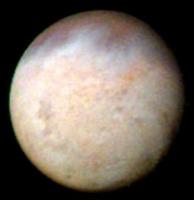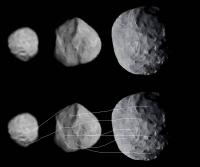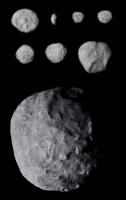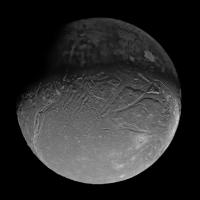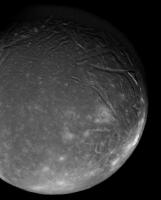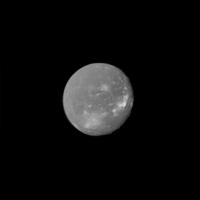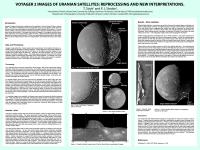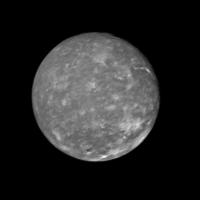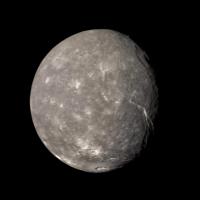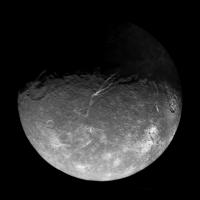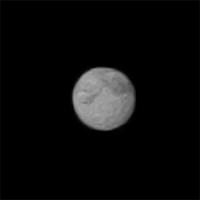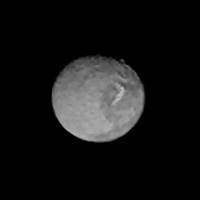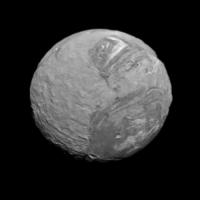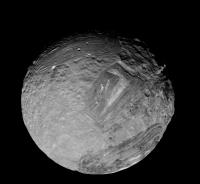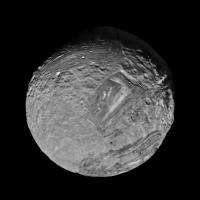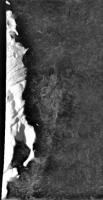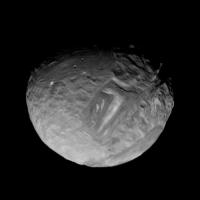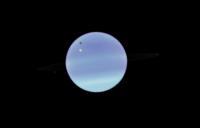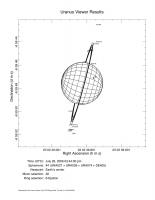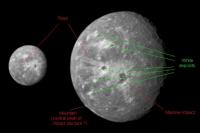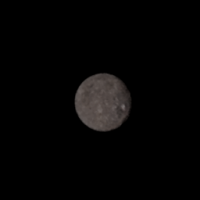Printable Version of Topic
Click here to view this topic in its original format
Unmanned Spaceflight.com _ Uranus and Neptune _ Moon Images
Posted by: tedstryk Feb 17 2007, 09:28 PM
I updated my site with a page with images of the moons of Uranus and Neptune. I will develop individual pages with more imagery, including color stuff eventually.
http://www.strykfoto.org/outericymoons/icymoons.htm
Also, http://www.strykfoto.org/proteus.htm is a link to the Proteus page, the only indivudual page that is already up.
By the way, at the bottom of the index page, I have a new shot of Neptune and Triton from WFPC 1 from before the repair mission.
Posted by: antipode Feb 17 2007, 10:26 PM
Beautiful!
I knew Miranda was battered and resurfaced, but I didn't realise how 'out of round' it actually was. That white crater on Umbriel has always intruiged me - I assume its excavated to fresh ice below? I wonder if we will get better images that this of the Uranian system in our lifetimes... ![]()
P
Posted by: Phil Stooke Apr 10 2007, 05:53 PM
Maybe this is an OK place to put this. I just made this for one of my students, and I might as well get more use out of it. It was hard to find in a quick google search or via Photojournal.
This is the clearest image of one of the plumes on Tritn, and I have labelled it to show the vent site, the vertical column, and the wind-transported plume.
Phil
Posted by: elakdawalla Apr 10 2007, 08:20 PM
Thanks, Phil! I've tossed it into the planetary.org image database -- should come in handy someday.
--Emily
Posted by: hendric Apr 10 2007, 09:22 PM
Calvin Hamilton's excellent SolarViews website has an "animation" of one of the plumes:
http://www.solarviews.com/raw/nep/geyser.mov
http://www.solarviews.com/eng/triton.htm
I don't think the plume is moving per se, but rather the angle of the photo is changing causing the plume to parallax (Is that a verb? ![]() ) over the surface.
) over the surface.
Posted by: Ian R Apr 11 2007, 05:30 AM
Here's an interesting video on the subject of Triton's plumes:
http://video.google.com/videoplay?docid=-2361275885502809184
Posted by: Rob Pinnegar Apr 11 2007, 02:59 PM
Yeah, the white crater on Umbriel is neat -- note there is also another crater with a white peak. That moon's a bit of a chocolate-dip-cone, I guess.
Umbriel isn't one of my favorite moons, but I've wondered occasionally if it mightn't have some similarities with Iapetus --- sort of a "global Cassini Regio". However, since we don't see craters "punching through" Cassini Regio, the comparison's not very appropriate. It's fun speculation, though.
Posted by: tedstryk Apr 25 2007, 11:59 AM
I tried to draw the best most I could out of the Voyager Umbriel set. The problem is that not only are the images distant and scarce, but because Umbriel has such a dark surface, they are either badly underexposed or smeared, for the most part.
Posted by: ngunn Apr 25 2007, 01:02 PM
http://www.solarviews.com/raw/nep/geyser.mov
http://www.solarviews.com/eng/triton.htm
I don't think the plume is moving per se, but rather the angle of the photo is changing causing the plume to parallax (Is that a verb?
I've had that movie saved to show to my students for some time but never realised that it probably shows parallax changes rather than true movement. If that is so then perhaps a cross-eye stereo view is more appropriate than an animation. One of our computer boffins kindly produced this from two of the movie frames (with me nagging over his shoulder):
Triton geyser stereo.jpg (Edit: doesn't work yet - but it will!)
Posted by: karolp May 9 2007, 05:04 PM
Hello everyone,
A friend of mine is also experimenting with outer moons these days :-) I thought I could share a link to his latest creation - does THIS Proteus hang out of your screen?
http://ksiezyce.republika.pl/mapy/3-d/proteus-mapa_3-d.html
Posted by: tedstryk May 26 2007, 08:41 PM
I have created a montage of the images from the flybys of the six largest Uranian moons (Puck, Miranda, Ariel, Umbriel, Titania, and Oberon). The images are to scale (not to the size of the worlds, but to their apparent size from Voyager. The exceptions are the closest views of Ariel and Miranda, which were scaled down. I have posted a small version below, and a link to the full version.
http://www.strykfoto.org/outericymoons/urcombo.jpg
Posted by: tedstryk May 27 2007, 12:34 AM
To add a bit of perspective, here are some color images with similar illumation shown to scale (in the case of Puck, since there is no Voyager color, I gave it a reddish hue to conform to groundbased data).
Also, I animated the Titania approach. I haven't corrected the set for the fact that some images are just colorized because there was only one image at that point, and the other individual images vary between OGV, GBUV, and other such combinations. Also, the first image was taken quite a while before the others.
Posted by: David May 27 2007, 03:39 AM
http://www.strykfoto.org/outericymoons/urcombo.jpg
It's very pretty -- but sadly it reminds me of how little we know about even the surface appearance of Uranus' moons, and that I am likely to be a very, very old man before we find out anything more.
Posted by: mchan May 27 2007, 06:19 PM
I like the presentation. Good work!
Posted by: tedstryk Jun 1 2007, 04:03 AM
I am thinking I might have arranged the Miranda images wrong. The thing spins so quickly and liked a pinwheel that it gets confusing. Phil, you might know if this is right.
Posted by: Phil Stooke Jun 1 2007, 01:29 PM
Sorry, Ted, it's not clear to me what you're trying to do. It looks like you want to arrange them so that we see the changing spacecraft geometry rather than the rotation - obviously they could be arranged either way. The chevron is the best clue. If so, then in your trio, the left one should be rotated 180 degrees. The dark patch from 1 o'clock to 3 o'clock in that view is the big dark patch on the left side of the other two views. Arden Corona, if I recall correctly. The other (non-chevron) corona is not dark, and in your little view it hardly shows up, but it's at 9 o'clock.
Phil
Posted by: tedstryk Jun 1 2007, 11:40 PM
Thanks Phil. By the way, I have assembled the Proteus sequence into a movie.
Also, for good measure, here is the current version I have of the ~1.5 km pixel image (which is badly impacted by severe underexposure). 
Posted by: Decepticon Jun 2 2007, 03:31 AM
Wow great work!
Posted by: tedstryk Jun 6 2007, 03:28 PM
Here is a new version of the Uranian combo with larger images.
Edit: See Below
Posted by: David Jun 6 2007, 05:04 PM
On what principles did you scale those images? Titania is bigger than Oberon, but not that much bigger. Your Oberon is about 90% Titania's size or less, whereas the real Oberon is more like 96-97% Titania's size.
Posted by: tedstryk Jun 6 2007, 05:32 PM
I used what I call "brain flatulence theory (BTT)." I was using the radius of Triton as the Diameter of Oberon...not sure quite how I did that. Here is a corrected version. It still looks a bit disproportionate due to the fact that more of Titania's disk is illuminated.
Posted by: tedstryk Jun 24 2007, 04:06 AM
I have completed a global color Triton image from the best color set before Triton fully filled the narrow angle camera. Some versions of this are available, but I have tried to improve the level of detail.
Posted by: Ian R Jun 24 2007, 12:10 PM
That's marvellous Ted.
Speaking of Triton, have you considered recreating the view of an ancient Tritonian crater I mentioned in this thread:
http://www.unmannedspaceflight.com/index.php?s=&showtopic=4286&view=findpost&p=92193
Posted by: JRehling Jun 25 2007, 04:38 AM
Remarkable coincidence. Just the other day, I was looking at the wonderful release image that shows Triton in fabulous detail but with the annoying artifact of a razor-sharp terminator and thought about asking one of the image "aces" to produce the product you posted here. Thanks -- into my screensaver with it!
Posted by: tedstryk Jun 25 2007, 09:17 PM
I can't quite see what image that is. I hadn't considered it, but wasn't really aware of it either...This looks interesting...
Posted by: tedstryk Jun 25 2007, 09:29 PM
This may have been the image you were thinking of (this is my version, with a normal terminator). It is multiframe, requiring reprojecting and of better quality in some areas than others. I did this a long time ago. I could probably make the coverage areas run together better now. The earlier image I posted was from the last set before triton filled the frame.
Posted by: volcanopele Jun 25 2007, 09:40 PM
Sweet! I've added that one to my list of desktop backgrounds.
Posted by: tedstryk Jun 27 2007, 01:17 PM
Here are the closest global views, excluding the receding sequence, in order.
Posted by: elakdawalla Jun 27 2007, 01:43 PM
Nice work, Ted.
It always amazes me how accurate a descriptor "cantaloupe terrain" is for Triton. I wonder if Triton is orange on the inside. ![]()
--Emily
Posted by: Ian R Jun 27 2007, 04:16 PM
All of the following polar projections were generated using the cylindrical maps created by Steve Albers (unless otherwise credited):
MIRANDA (southern hemisphere) (JPL):
Posted by: Ian R Jun 27 2007, 04:22 PM
UMBRIEL (southern hemipshere) (Philip Stooke):
OBERON (southern hemipshere):
Posted by: Ian R Jun 27 2007, 04:24 PM
TRITON (southern hemipshere) (JPL / William Johnston / A. Tayfun Oner / Steve Albers):
Posted by: Ian R Jun 27 2007, 04:26 PM
TRITON (northern hemipshere) (JPL / William Johnston / A. Tayfun Oner / Steve Albers)
Posted by: tedstryk Jun 27 2007, 06:38 PM
It always amazes me how accurate a descriptor "cantaloupe terrain" is for Triton. I wonder if Triton is orange on the inside.
--Emily
New mission proposal: Deep Impact, Triton. The mission will release a projectile equipped with a nuclear device powerful enough to break through the moon's rind, allowing the flyby craft to study the ripeness of the melon.
By the way, here is a full resolution version of the last of the series.
Posted by: dvandorn Jun 27 2007, 07:08 PM
No, no, no, Ted -- what we really need is Deep Rap - Triton, in which a huge *knuckle* is sent to Neptune's largest moon and used to rap on the rind. Extremely sensitive microphones aboard the flyby craft will then listen for the "exact right thunking sound" to determine the ripeness of the interior...![]()
-the other Doug
Posted by: TritonAntares Jun 27 2007, 07:19 PM
It always amazes me how accurate a descriptor "cantaloupe terrain" is for Triton.
I wonder if Triton is orange on the inside.
Not on the inside, but on the outside - at least partly.
Have a closer look at the left one of Ted's Triton pics. There's an orange area visible at the left upper limb.
Some far distance images show more of this orange tint, like this one:
Btw., marvelous work Ted...

Posted by: tedstryk Jun 27 2007, 07:58 PM
Have a closer look at the left one of Ted's Triton pics. There's an orange area visible at the left upper limb.
Some far distance images show more of this orange tint, like this one:
Btw., marvelous work Ted...
The color seems to show up under low solar angles, although it is much less pronounced than in that image - Triton is rather whitish, really. It has all sorts of hues, but they are much more muted. Color exaggeration can be a good thing, but I have avoided it because the coverage I have here is so inconsistent that I am having enough trouble making the images seem remotely similar as it is.
Posted by: tedstryk Nov 2 2007, 03:37 PM
I have improved my Proteus set. I have always thought there were features in the "Bad Tooth" image. After reprocessing these images, there is clear correlation between them. The highest resolution image has a resolution of 1.35 km/pixel. For context, that is somewhat better than the best pictures of Ariel (2.4 km/pixel). However, it was so severely underexposed that it is usually blurred to hide the effects of underexposure, making it appear to be an enlarged but distant image.
Posted by: jasedm Nov 2 2007, 06:57 PM
That's AMAZING Ted - I am ASTONISHED at the level of detail you've pulled out of the raws. What type of processing are you using here????
Posted by: tedstryk Nov 2 2007, 08:30 PM
I used Photoshop. After calibrating the images, I compiled the pixels of some of the empty space from the images in the vertical direction (minus rows that contained moire) and subtracted this from the image. I used several noise reduction methods so as to minimize the loss of detail. I also used a high pass filter to bring out detail, which I merged with other versions of the images so as to bring back the low frequency features. Here is my complete Proteus set (the image in the upper left corner is Larissa, and next to it is a crescent Nereid, but the rest are Proteus).
Posted by: nprev Nov 3 2007, 04:12 AM
![]() Unbelievable, Ted. That's the first time I've ever seen a resolved image of Nereid...always wondered what it looked like. Thank you so much for this gift!!!
Unbelievable, Ted. That's the first time I've ever seen a resolved image of Nereid...always wondered what it looked like. Thank you so much for this gift!!! ![]()
Now I can visualize how the terrain around the Outsider's base looked when Speaker-To-Animals tried to steal the Long Shot from the Puppeteers... ![]()
Posted by: ElkGroveDan Nov 3 2007, 04:21 AM
That odd texture on Proteus has got me scratching my head. It's too distinct to be a processing artifact. Does anyone know if any other solar system body exhibits half-swirls and brush-stroke features like that?
Posted by: nprev Nov 3 2007, 04:44 AM
Yeah, I noticed that too, Dan. (I was also struck by the apparent low cratering rate, but it seems logical that the inner Solar System was/is much more prone to this; Neptune's orbit may sweep out a lot more volume of space, but there's also probably been a lot less debris out there since well before the LHB.) However, I do recall seeing things like the "brush strokes" in other enhanced imagery of other objects, so my money's on image processing artifacts.
Posted by: tedstryk Nov 3 2007, 01:01 PM
Many of the "brush strokes" are cracks that radiate from the large impact craters. As for the unusual features in the lower portion of the high resolution image, I always interpreted them as artifacts until the same features showed up in the second closest image. I have heard the theory that Proteus is the reconstituted remains of an old Neptunian moon that was destroyed by Triton's arrival. That may have something to do with it.
One things that helps is that although the closest frame is a single, underexposed frame, the next closest set has four images, and the more distant shots are made using two images. This allows for much more effective noise reduction when compared to the lone Voyager image of Puck. It's dimensions are 440×416×404 km, compared to about 502 km for Enceladus, 480×468.4×465.8 for Miranda, and is a bit larger than Mimas (414.8×394.4×381.4). Ceres also falls in that range (487 km at the equator, 455 km at the poles). Nereid is only ~340 km in diameter, and Larissa comes in at 216×204×164.
Posted by: MarcF Nov 3 2007, 04:55 PM
I think you mentioned the diameter values for all the bodies except for Ceres, for which the numbers correspond to the radius. I' m almost sure Ceres has twice the size of Proteus, Miranda or Enceladus.
Marc.
Posted by: tedstryk Nov 3 2007, 05:06 PM
Oops, you are right. I remembered an asteroid was in that range, but it is Vesta (578×560×458).
Posted by: jasedm Nov 5 2007, 04:57 PM
Think I need to give myself a photoshop tutorial.
Very nice work with the enhancements - great to see even a tiny bit of detail on Nereid (especially since we probably won't be out this way again for 30 or 40 years)
Posted by: CAP-Team Apr 1 2008, 10:31 AM
I noticed Steve Albers updated his Ariel map, he improved a bit of Uranus-shine part of Ariel
Posted by: tedstryk Apr 2 2008, 01:22 AM
Yes, those are the images I reprocessed for my LPSC presentation.
Posted by: tedstryk Apr 2 2008, 01:44 AM
Here are three of the main views.
Here is the LPSC poster.
....And the abstract.....
http://www.lpi.usra.edu/meetings/lpsc2008/pdf/1362.pdf
Posted by: JRehling Apr 3 2008, 06:32 PM
Wonderful stuff. Especially like the Ariel work.
Posted by: tedstryk Apr 3 2008, 09:04 PM
Dragons...now that would be a neat discovery!
Here is my guest blog about it that I wrote during the conference.
http://planetary.org/blog/article/00001362/
Posted by: elakdawalla Apr 10 2008, 05:15 PM
Cool. Are those two more moons to the left of Uranus? Where'd you get the data? Links, please! ![]()
--Emily
Posted by: tedstryk Apr 10 2008, 07:09 PM
The inner one definitely is. The outer one may be a moon and may be a star (I am basing this on image to image motion). I will add that these were taken using the ACS wide field camera. High Resolution Channel images were taken during the transit, but they all missed the planet.
These images are from a large set http://archive.stsci.edu/proposal_search.php?mission=hst&id=10805. The datasets involved are:
j9q307laq
j9q307lbq
j9q307lcq
j9q307ldq
j9q307lfq
j9q307lgq
j9q307lhq
Here are some other sets of HST Uranus data from the same time period (and some Neptune stuff as well, since some of the proposals were mixed). Also, there were a lot of WFPC/2 images taken last year, but those are still proprietary.
http://archive.stsci.edu/proposal_search.php?mission=hst&id=10870
http://archive.stsci.edu/proposal_search.php?mission=hst&id=10534
http://archive.stsci.edu/proposal_search.php?mission=hst&id=10473
http://archive.stsci.edu/proposal_search.php?mission=hst&id=10502
http://archive.stsci.edu/proposal_search.php?mission=hst&id=10170
http://archive.stsci.edu/proposal_search.php?mission=hst&id=10102
http://archive.stsci.edu/proposal_search.php?mission=hst&id=9823
http://archive.stsci.edu/proposal_search.php?mission=hst&id=9725
http://archive.stsci.edu/proposal_search.php?mission=hst&id=9035
http://archive.stsci.edu/proposal_search.php?mission=hst&id=9344
Posted by: elakdawalla Apr 10 2008, 07:51 PM
Here's the http://space.jpl.nasa.gov/cgi-bin/wspace?tbody=799&vbody=399&month=7&day=26&year=2006&hour=13&minute=20&rfov=2&fovmul=-1&bfov=30&porbs=1&showsc=1. Looks like the inner dot is Miranda; the outer one must be a star as there's no other moon that's close.
--Emily
Posted by: volcanopele Apr 10 2008, 11:47 PM
Even including smaller moons, no moon matches the location of the outer dot. It would have to be exterior to Miranda (if in the ring plane).
Posted by: tedstryk Apr 10 2008, 11:53 PM
I should also add that this was created using red-near IR filters, as there is no data available any "bluer" than red in this set.
Posted by: tedstryk Apr 13 2008, 04:59 AM
Here is the Oberon sequence. It is hard to believe that this is the best sequence we have for Oberon, but it is.
Posted by: TritonAntares Apr 13 2008, 11:43 AM
Sad to see, that this is the best of Oberon - but a reason why to get an orbiter around Uranus in not so far away future and hopefully in our lifetime.
Let me mention some visible structures (don't if they got names ?):
There's a massive impact mid center of the Oberon disk, also visible are several rays connected with a second smaller impact more left.
All over the landscape white areas are visible - probably of the same type as on Iapetus trailing hemisphere ?
There's a huge mountain at the lower left rim of the disk, maybe the central peak of an impact structure, which I cannot detect for myself...
Bye.
Posted by: tedstryk Apr 13 2008, 12:40 PM
Here is Tayfun Oner's map, which is labeled with some of the few names. http://www.solarviews.com/raw/uranus/obermap2.jpg
Also, comparison between these two images show that the peak on the limb is associated with a large basin. Also, there is a large basin next to Coriolanus on the terminator, which can be seen clearly in the distant image.
Posted by: scalbers Apr 22 2008, 08:50 PM
Here is my first Oberon map revision in nearly 3 years - thanks to the updated imagery from Ted Stryk. In addition to an earlier color image from Ted, the two largest ones are included from the new set:
http://laps.noaa.gov/albers/sos/sos.html#OBERON
I think the other smaller images may cover much of the same territory, though it is hard to be sure.
That's the latest,
Steve
Posted by: tedstryk Oct 28 2009, 02:34 PM
I posted a short blog entry on poor Umbriel.
http://planetimages.blogspot.com/2009/10/murky-views-of-umbriel.html
Powered by Invision Power Board (http://www.invisionboard.com)
© Invision Power Services (http://www.invisionpower.com)


